Capital:
Brasilia
Currency
Real
Best time to visit:
From December to March, the Brazilian summer, there is the greatest influx of tourists and prices are higher. From May to September there are fewer visitors (but not in July during the school holidays) and in Rio the heat is more bearable with less humidity, in the south the climate is cool or even cold.
In a word:
Bacana (cool)
Vaccines
None
Warnings:
- Tap water is not safe;
- Malaria and yellow fever can be a problem in the Amazon basin: consider vaccination for the former and chemoprophylaxis for the latter;
- Pickpockets and armed robberies are not uncommon even along the main roads linking Sao Paulo with the cities of the coast.
- Do not flaunt signs of wealth.
At the table:
Children love churrascarias and not only for the meat (cooked on the grill and always abundant), but also for the custom of delivering a disc, green on one side, to communicate to the waiter that you want to eat again and red, to say to have finished. Arroz and feijao (rice and black beans) are often served as a side dish but fried potatoes can also be ordered.
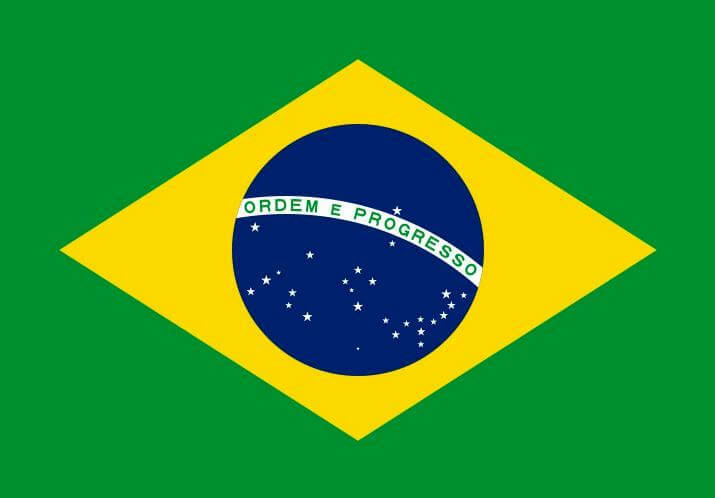
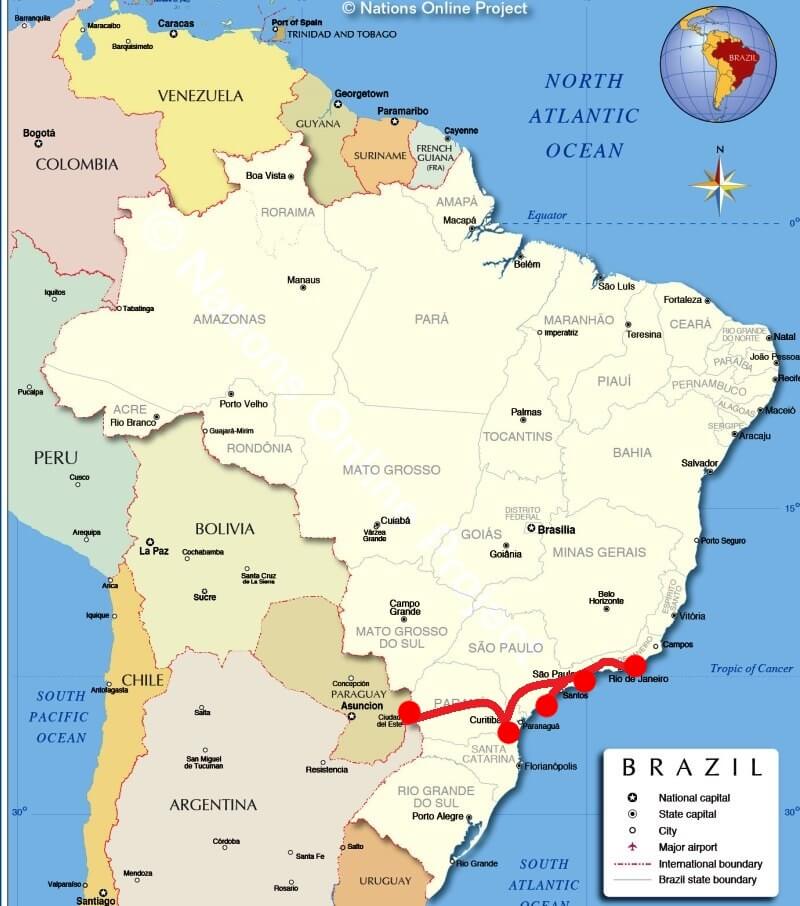
Essential experiences:
Try a capoeira lesson, a discipline halfway between martial art and acrobatic dance; Take the cable car up to Pao de Açucar and take the cogwheel train up Corcovado, where the Cristo Redentor rises and you can enjoy a magnificent panorama; Let yourself be enchanted by the Iguazu Falls (Paranà), on the border with Argentina.
Traveling in Brazil means meeting a maravilous land, variety of landscapes, cultures, colors, flavors and music in a single itinerary; it is a country capable of satisfying the different needs of each traveler. A holiday in Brazil leads to discover places of exceptional natural beauty (the green lung of the Amazon, the Iguacu waterfalls, the fauna of the Pantanal), the historic and colonial cities, the long golden beaches and the exciting landscapes of the north east of the country. , a gastronomy rich in flavors and colors, the unique and wild parties (Carnival of Rio de Janeiro, the white New Year of Salvador Bahia).
It is a place dominated by contrasts, where an exceptional natural heritage is reconciled with artistic and cultural treasures of considerable value.
Wherever you go you are always accompanied by rousing music and festive atmospheres.
Discover the charm, extravagance and color of the Carnival homeland, immerse yourself in its vast territory populated by a great variety of flora and fauna and visit its immense cities.
Its colonial history is very special, being the only South American country to have been colonized by the Portuguese, but many tourists are attracted above all by its beaches, scattered over 7,500 km of Atlantic coast and various islands.
A country so vast that it cannot be fully discovered and experienced in a single time, and so fascinating as to instill the desire to visit it again, to continue to be amazed and amazed each time.
This time we focused only on the southern part of the country, reserving for ourselves the opportunity to discover the rest of this immense nation in future trips, also because the lush northern part and especially the Amazon one are already on our bucket list!
Despite everything, Brazil enchants from the first moment and leaves, at the moment of farewell, a real "saudade": a romantic nostalgia that is typical only of this country.
Our suggested itinerary (16 days) | |
five days: | San Paolo (visit to the Municipal Market, Bovespa, Botanical Garden, Pinacoteca do Estado, Libertade district and Metropolitan Cathedral) |
five days: | Rio de Janeiro (visit to Copacabana, Ipanema, Po de Azucar, Cristo Redentor, Maracana Stadium, Cuidad do Samba and the favelas) |
three days: | Curitiba; Foz do Iguazu (visit to the Iguazu Falls also in the Argentine side) |
three days: | Santos; return to Sao Paulo |
We start our long tour from the city of Sao Paulo, São Paulo in Portuguese, is the largest in Brazil, a huge metropolitan area with over 12 million people, almost 20 if you count all the neighboring territories, you find yourself spending too hours, by car, to cross it from one end to the other.
It is a city of contrasts and you will notice it as soon as you set foot there: very rich neighborhoods contrasted with absolute poverty, on one side the luxurious skyscrapers, on the other the favelas. Here there are strong contrasts among the population, with people traveling by helicopter while others struggle to find the money to eat.
São Paulo is the financial, commercial and cultural center of all of Brazil as well as being a very cosmopolitan city. In fact, over the years, the city was also one of the major destinations of European immigration, especially the Italian one, about 50% of the population living here has at least one Italian ancestor!
Unfortunately, crime is well present, especially that linked to gangs of children who instill fear throughout the city, with assaults, including armed attacks, both against tourists and especially residents.
In Brazil, the largest cities carry these problems with them without being able to solve them, and those who have lived there for years have now found themselves accustomed to this kind of episodes and conflicts.
In the company of two Pauliste friends: Veronica and Fernanda, we set out to discover this immense city.
We stop to visit the “Mercado Municipal”; the stalls selling the multicolored tropical fruit, so beautiful and shiny it looks fake!
Mercado Municipal is located in the heart of São Paulo and is one of the meeting places for locals and tourists. It can be considered a real tourist and cultural center, especially for the important historic building in which it is housed, an architectural symbol of the city.
Designed by engineer Ranzini and inaugurated in 1933, it is full of retail and wholesale stores and you will find mainly foodstuffs, such as fruit, vegetables, cereals, meats and spices.
We chat with a seller: Francisco, who as soon as he hears that we are Italians, he: the son of Calabrian emigrants, begins to let us taste all kinds of fruit possible and imaginable! Colombian passion fruit, mango, papaya, lixia, ground bananas, giant cherries… Delicious!
Immediately after it is the turn of the local specialty: the “bolinho de bacalhau”, a fried mixture of cod, potatoes and parsley. "Ma-ra-vi-lho-so"!
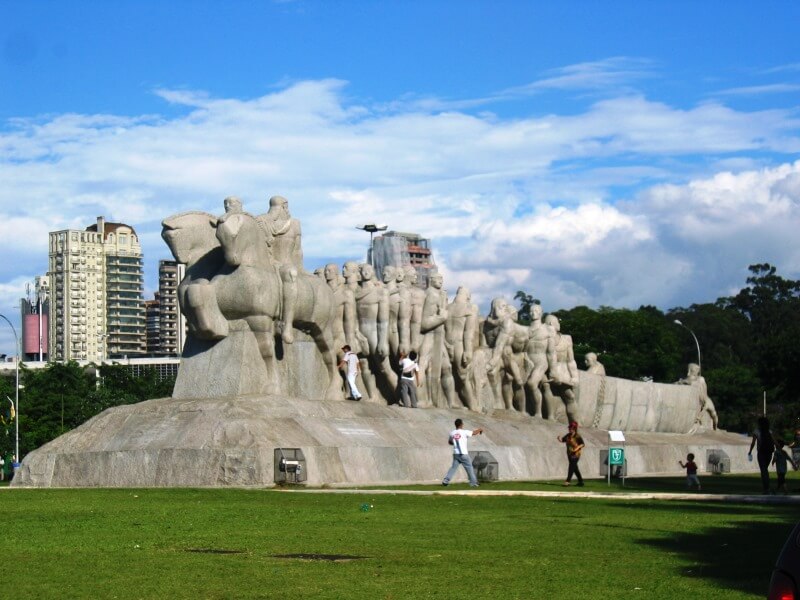
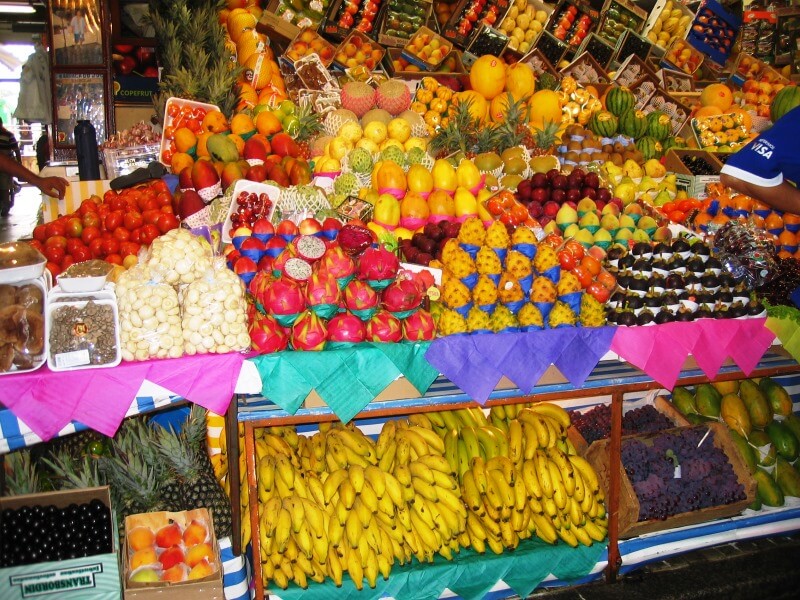
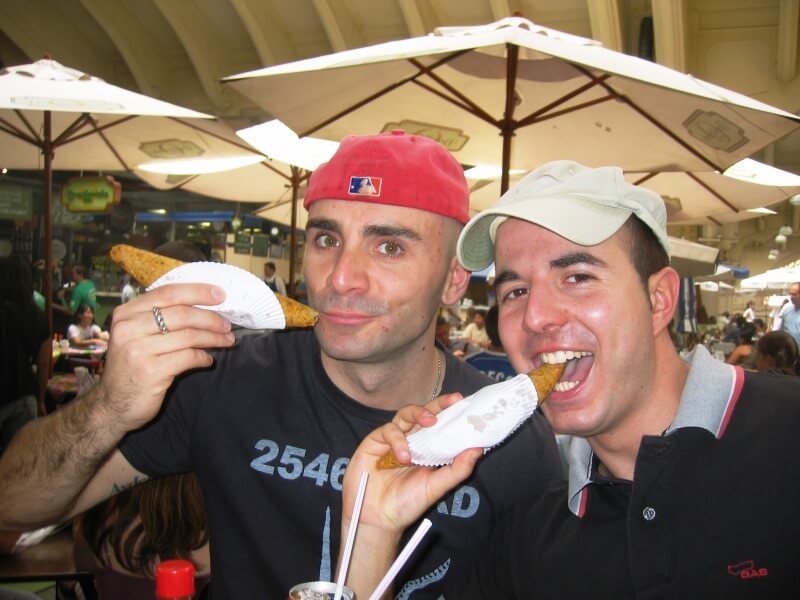
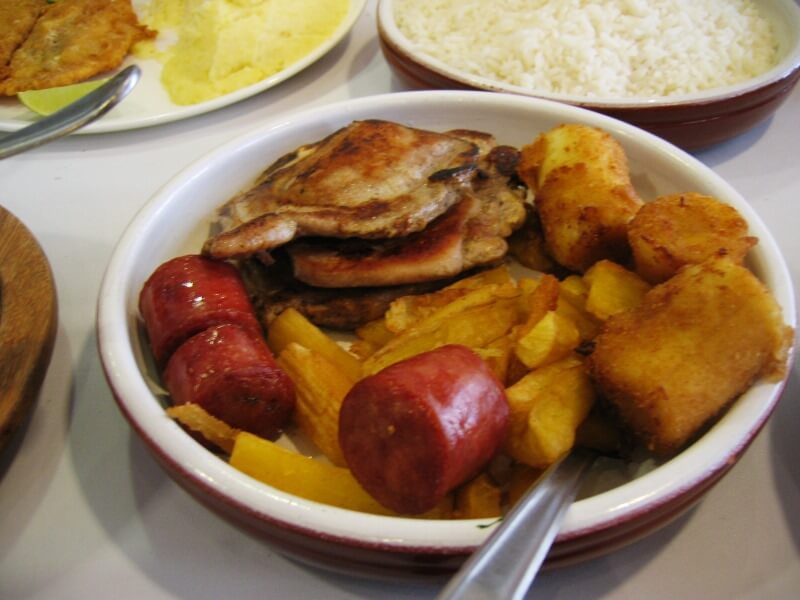
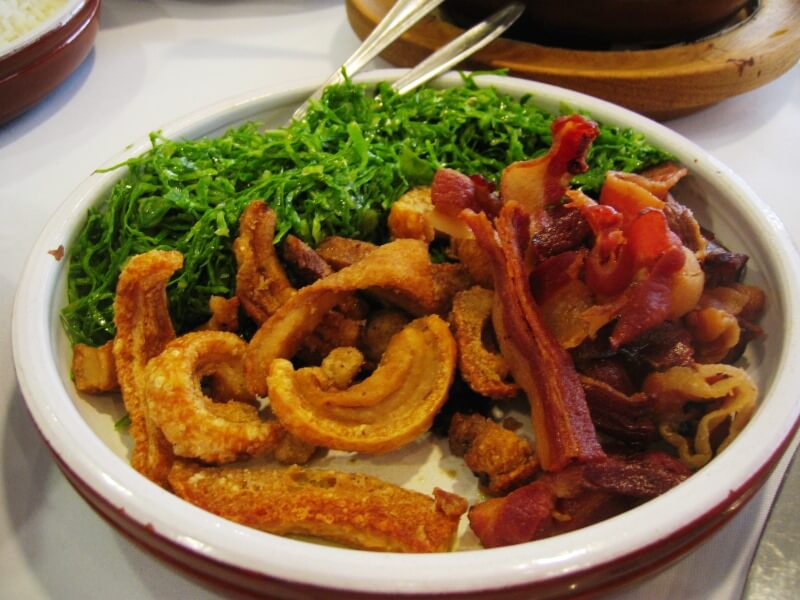
Bovespa. The Brazilian Stock Exchange: Here we are in the financial heart of a nation!
We even manage to enter a space dedicated to visitors and once again the friendliness and sympathy of this people strikes us!
It's too hot outside. The thermometer marks 31 °!
You absolutely need a fresh Caipirinha, relax at "Hi Jorge" while I, a teetotaler, enjoy a nice smoothie of "abacaxi and hortelà" (pineapple and mint), with an orchestra that cheers up the environment by playing romantic carioche melodies!
We cross the Avenida Paulista, one of the most characteristic symbols, this is a perfect area to look for accommodation or accommodation during your stay: conveniently connected to all areas of the metropolis, full of people at any time, many restaurants and clubs, hotels covering all price ranges, shops for shopping. We stop at the "Bolinha", a delightful restaurant whose specialty is the "fajolada", a bean soup with sausages, pork fat, various offal and so on and so forth ...
The Botanical Garden of San Paolo is the perfect place to relax while visiting the city. A real green oasis of 36 hectares, within the Ipiranga Provincial Park, in the midst of the skyscrapers and concrete of São Paulo.
In the garden you can follow one of the many paths and trails and admire the approximately 380 species of trees, inhabited by different species of birds, including green-billed toucans. Among lakes, beautiful orchids, aquatic plants, avenues of palm trees and much more, you will embark on a real journey to discover the Brazilian forest.
Inside the garden, you can also find the João Barbosa Rodrigues Botanical Museum, where you will learn about all the conservation programs of the natural park and all the studies on plants and animal species.
The Pinacoteca do Estado is one of the most important art museums in Brazil. In addition, it is the oldest museum in São Paulo: it was founded in 1905.
The building that houses it dates back to 1900 and is located in the Jardim de Luz, in the city center.
As for the collection, the Pinacoteca houses one of the largest collections of Brazilian art, consisting of thousands of works of art ranging from the nineteenth to the twentieth century, covering various eras of Brazilian painting. In the rooms you can admire about 9,000 works, including paintings, sculptures, drawings, prints, photographs and decorative art objects.
The entrance ticket to the museum also includes entry to the beautiful Jardim de Luz, one of the oldest gardens in the city and where the museum is located.
Of all 96 districts of the city, you should definitely visit the Liberdade district, the Japanese district of São Paulo. You should know that the largest Japanese community outside Japan lives here and the first emigrants arrived in 1902. In recent decades, the neighborhood has also opened its doors to Chinese and Korean communities, giving life to a real Asian Town in the heart. of the city.
In this area you will not even feel like you are in Brazil: among Japanese restaurants, Chinese taverns, the Japanese Immigration Museum, the oriental garden and the Buddhist temple, the culture, folklore and gastronomy of Asia take over. If you are here on Sunday, we recommend you take a tour of the market, located in Praça da Liberdade and which lasts from early morning to mid-afternoon and where you can find handicrafts and Asian culinary specialties.
We conclude our tour at the Metropolitan Cathedral of St. Paul, also known as the Cathedral of Our Lady of the Assumption and St. Paul, is located in the city center and is the fifth largest Gothic church in the world, as well as being one of the most beautiful from all over Brazil. The works for its construction began in 1589 and ended in 1616.
In 1911 it was demolished, to build on it what we can still visit today.
The German architect Hehl designed it in the Gothic style, drawing inspiration from medieval European cathedrals. Many of the mosaics, sculptures and various furnishings were imported directly from Italy. The Cathedral has 5 naves and can hold nearly 8,000 people.
But be careful because Sao Paulo is not one of the safest cities. Do not stroll through its streets carefree. Thefts are the order of the day: each building has 24-hour guards, double entrance gates (bank type), cameras in various strategic points that you can even monitor directly sitting comfortably in an armchair in front of your television!
We know Leandro who works as an investigator even if, to see him, everything looks like except a policeman! It gives me more of the idea of a drug trafficker, as, to joke, I call him. Gold chains around his neck, gun on his belt, another attached to the calf, tattoos ... he explained to me that he must dress like this to blend in and blend in with the people ...
After a tropical dinner based on lixia, passion fruit and pine cone, we get ready for departure: tomorrow we go to Rio de Janeiro!
A 45 minute flight and we're in the legendary Rio!
One of the most famous urban landscapes in the world, with skyscrapers and buildings arranged around bays and lagoons, among the lush greenery of lush forests and exotic gardens, lined up on the very long beaches.
The name Rio de Janeiro is to be connected to the fact that when this area was discovered by a group of Portuguese explorers led by Amerigo Vespucci in January 1501 they thought that the bay was the mouth of the river and for which they called it Rio de Janeiro, which in Portuguese means January river.
We are staying in the Copacabana area: known for its six km long beach, which is among the most famous in the world.
Copacabana begins at Princesa Isabel Avenue and ends at the supposed lifeguard watchtower Posto 6, boasts white sand and calm water, and is filled with numerous kiosks, hotels, restaurants, bars, nightclubs and residential buildings.
The Copacabana waterfront promenade is paved along its four km in length, it was completed in 1970, designed by Roberto Burle Marx.
While I look for refreshment from the 37 ° by diving into the sea of the famous Copacabana beach, surrounded by thousands of boys / girls, I do nothing but repeat to myself ... "I'm in Rio, in Copacabana ..."
The thing that struck me most was seeing so many small groups of boys but also girls playing beach soccer ... everywhere and all "phenomena" ... Now let me explain many things ... These, football, have it in their blood ...
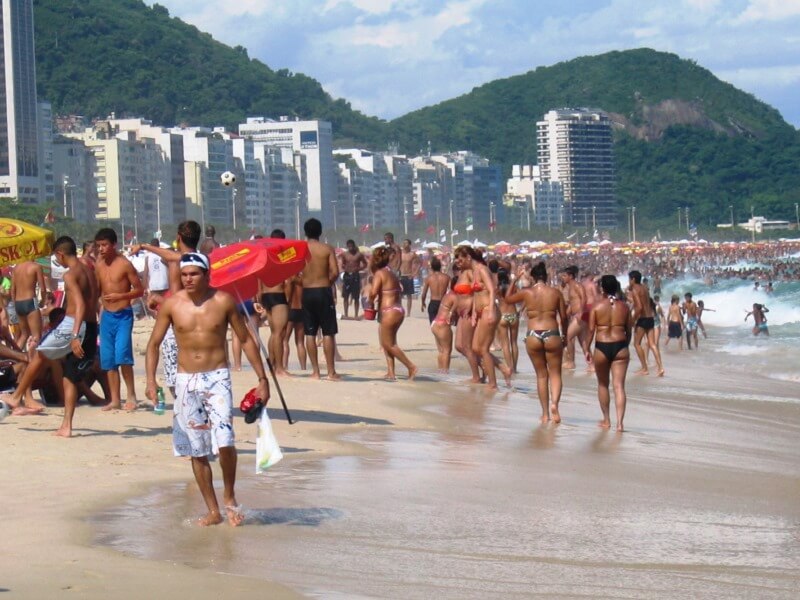
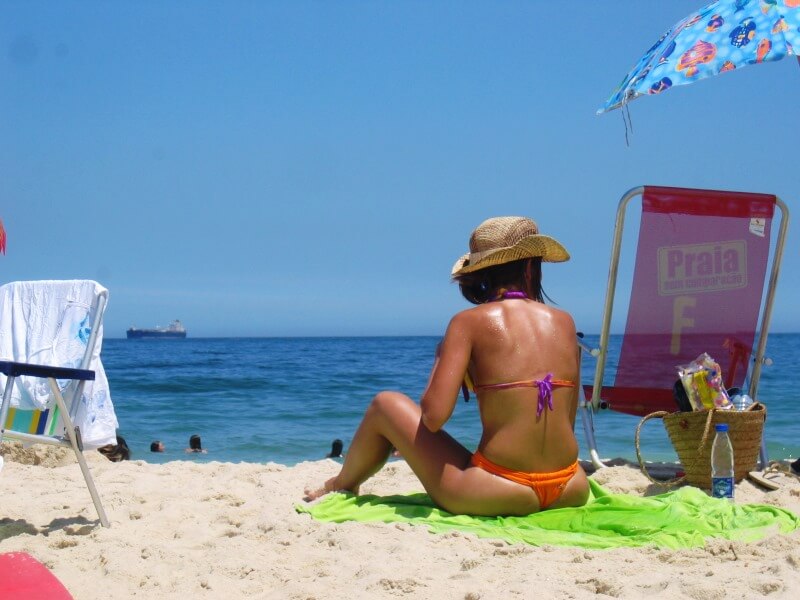
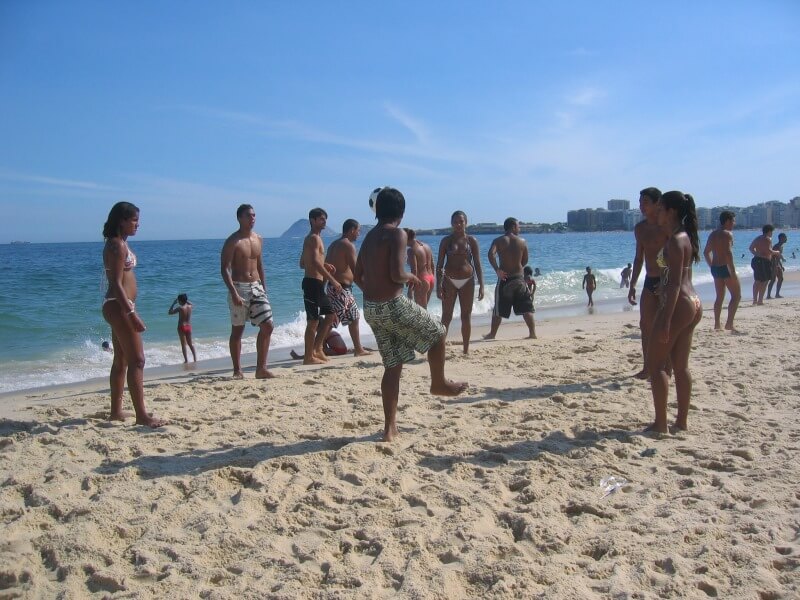
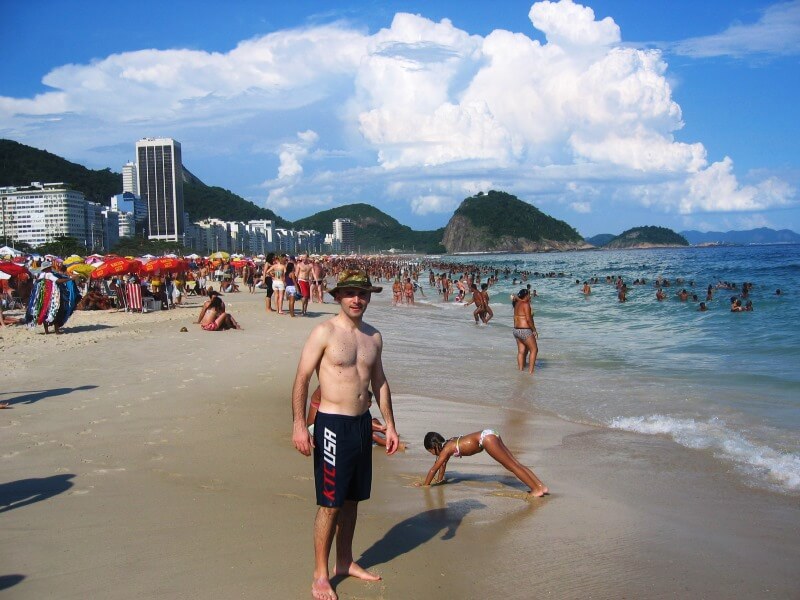
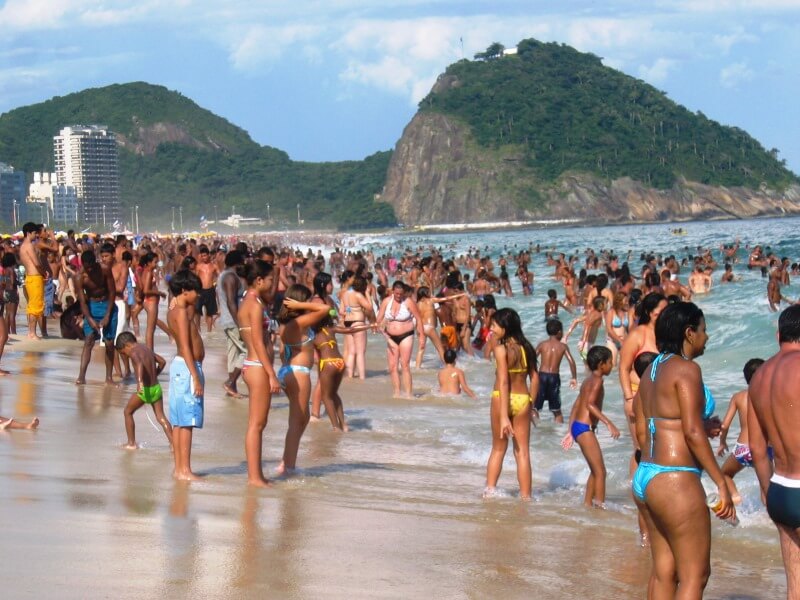

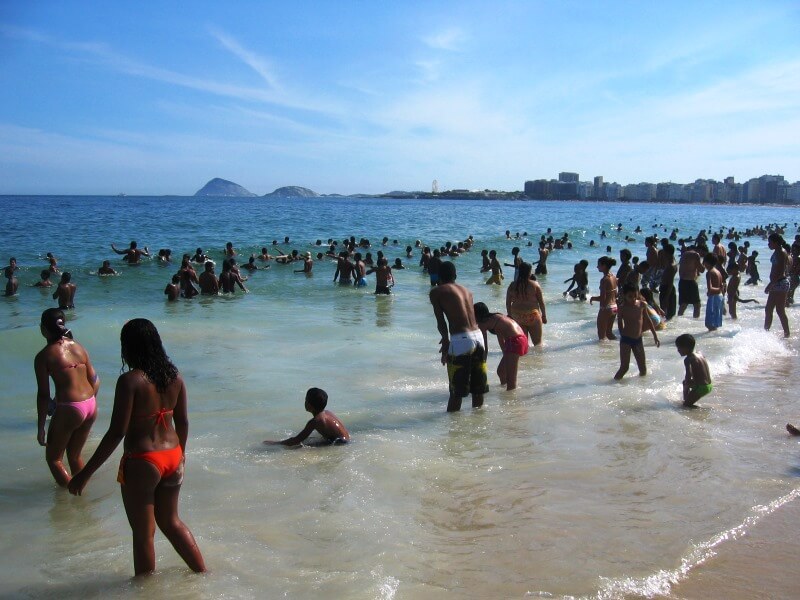
Corcovado and the statue of Christ the Redeemer.
There are two things that the whole world knows about Rio de Janeiro. The first is linked to an event or its colorful and seductive carnival, the second is the symbol of the city, the Statue of Christ the Redeemer located on Corcovado, a peak reachable with the Trem do Cordovado.
It was erected between 1922 and 1931 created by the Franco-Polish sculptor Paul Landowski, financed almost entirely by contributions from Brazilian Catholics.
At 700 meters high is this statue overlooking Rio.
I have always been enchanted by that huge statue placed almost to watch over the great Brazilian city ... even if with poor results given the poor conditions in which most of the population finds themselves! (see favelas for example ...)
From the foot of the Christ it is possible to grasp all the districts into which the city itself is divided, from the bay that divides Rio from nearby Niterói to the forest of the Tijuca National Park, from the beach of Botafogo to the silhouette of the Sugar Loaf.
The Sugar Loaf (Pão de Açúcar in Portuguese), the famous mountain with rock walls, partly covered by the lush green of the forest (mata atlântica), which rise from the ground, reach the top and then descend forcefully and dive into the sea Rio de Janeiro blue.
Climbing the Sugar Loaf by cable car is quick and easy and a visit to the Cidade Maravilhosa should always include this beautiful hike.
The Sugar Loaf cable car is one of the mythical images of Rio de Janeiro (postcard famous in every corner of the world) and you can take it from the station located in the Urca area, precisely in the square in front of the beautiful beach of Praia Vermelha.
In reality, the ascent of the teleférico or bondinho up to the Sugar Loaf is not direct. You will first have to make a stop on the Morro da Urca, get off and change cab to make the second section of the line, which will take you to the height of the Pan di Zucchero at 396 meters.
We recommend visiting the Sugar Loaf on a clear day and in good weather, perhaps an hour before sunset, to be able to see the most beautiful colors and watch the spectacle of Rio de Janeiro's lights come on for the night.
At the top you will find shops and eateries but consider that everything is very expensive.
This morning I set foot in the famous Maracana stadium!
Officially Estadio Jornalista Mario Filho, it is a stadium owned by the government of the state of Rio de Janeiro, named after the neighborhood of the same name.
It opened in 1950 to host the FIFA World Cup and in the final match Brazil were defeated 2-1 by Uruguay. Since then, it has been mainly used for football matches between major Rio de Janeiro football clubs, including Botafogo, Flamengo, Fluminense, and Vasco da Gama.
How many times have I heard of it, the largest stadium in the world! It had a capacity of 120.00 spectators, now reduced because seats have been installed ...
At the entrance, a bit like in Hollywood, there are the footprints of the greatest Brazilian footballers of all time imprinted on the concrete, from Pele to Ronaldo, from Altafini to Zico to Kakà etc.
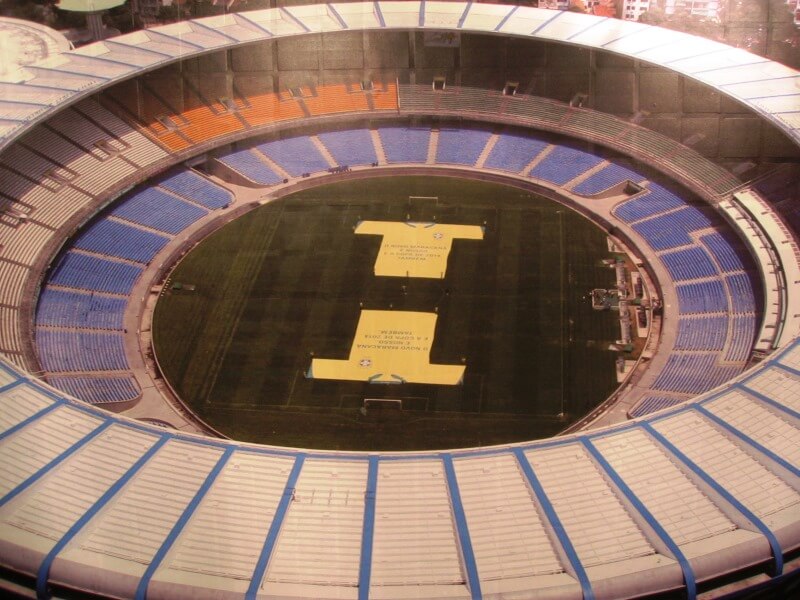
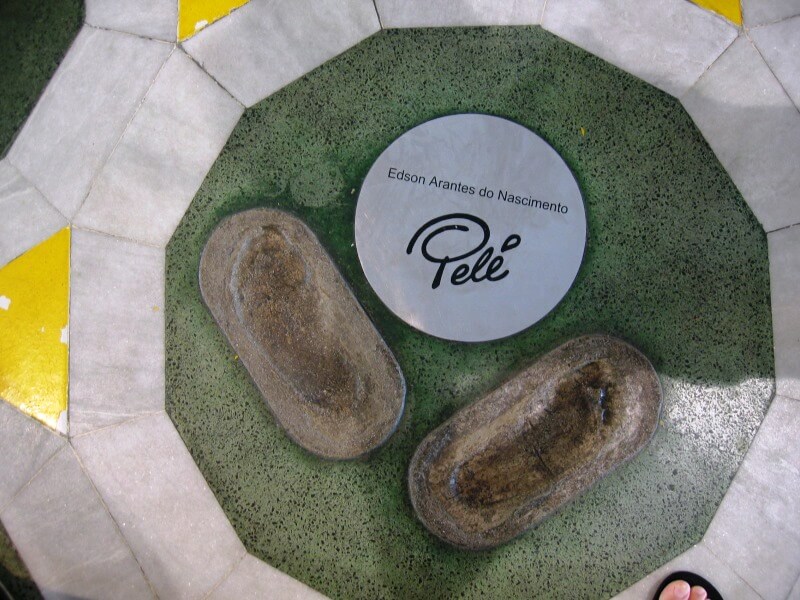

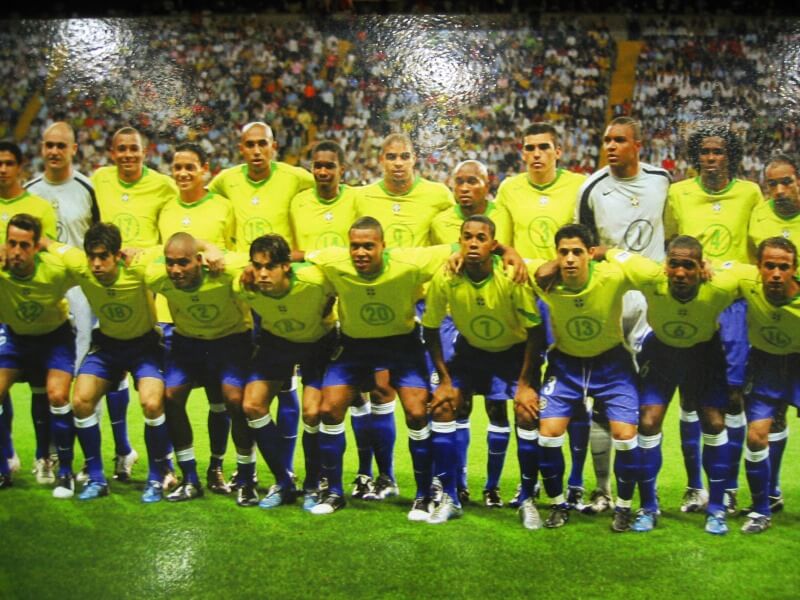
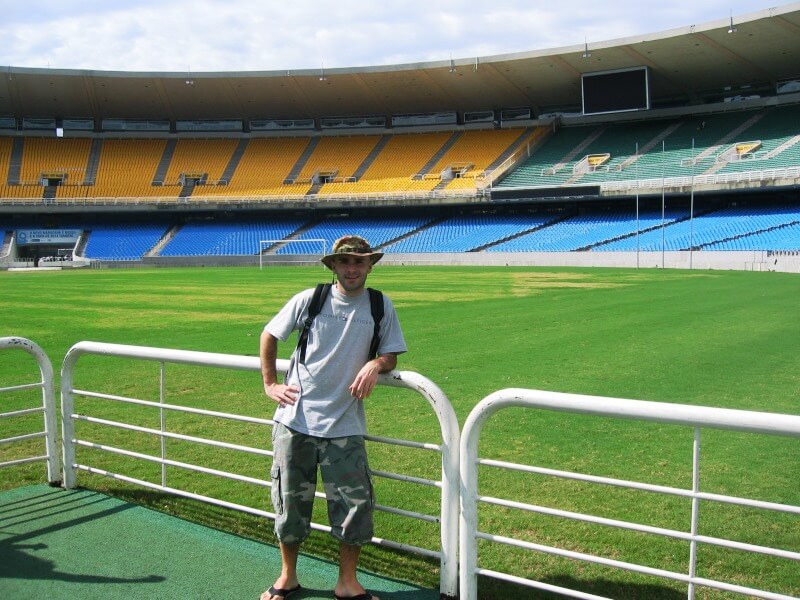
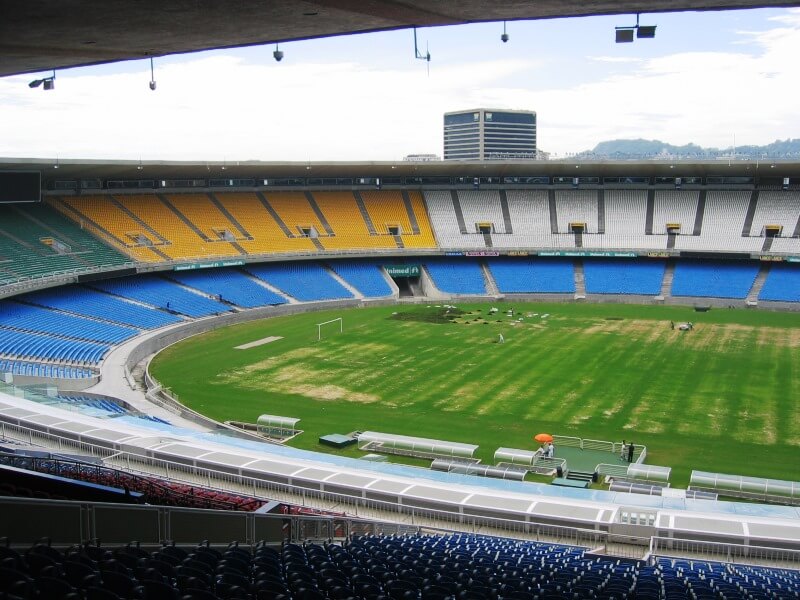
We continue towards the Ciudad do Samba. A place where the twelve most important samba schools in Rio prepare the allegorical floats that in a month or so will parade along the city's sambadrome!
Have you ever heard of the Sambodromo?
It is the avenue set up for the parades of the famous Rio carnival: with its tiers it is the place where the best samba schools perform.
Here I really understood how important Carnival is for Brazilians, a year of work for floats that will last ten days and then be destroyed ...
“The Brazilian Carnival is celebrated differently in the various regions of the country: the Rio Carnival is considered one of the most famous in Brazil and around the world due to the magnificence and richness of the festivities.
The Salvador de Bahia carnival is famous for its large popular participation and for what is the biggest attraction of the Bahian festival, the Trio Elétrico.
The trio tradition begins in 1950, with the duo of artists formed by Dodô and Osmar, respectively Adolfo Antônio Nascimento and Osmar Álvares de Macedo. The two musicians had the idea of renovating an old 1929 Ford abandoned in a garage and going out into the streets, giving life to a traveling concert, playing directly from the car on which they had installed an amplification system. The show was followed by the crowds on the streets of the city center and since then the tradition has been repeated in every edition of the Salvador carnival.
In addition to accompanying the trio elétrico through the streets of Salvador, the crowd gathers in the carnival city - an area of 25 km2 with dressing rooms, balconies, medical assistance and public safety, as well as various special infrastructures mounted by the different municipal, state bodies and federal.
During these seven days Salvador welcomes tourists from all over the world ”.
Rio is a city of strong contrasts and although much of the city can be compared to the modern metropolises of the world, many of its inhabitants live in the extremely poor areas of the favelas, slums leaning against the hillsides.
Tomorrow we return to Sao Paulo… but something is still missing for me… Be careful to call them favelas, it is a discriminatory term, they are called: “community”!
On board a taxi we try to venture… But it will be more complicated than expected.
The favelas are characterized by a wide spread of crime and violence, gang fights and other social problems related to poverty and ignorance.
Today we leave for Sao Paulo but before going to the airport we decide to visit the center of Rio. We go there by metro. Clean, quiet and well supervised!
Brazil without tourists at last ...
In those immense markets there were really the people of the "rua". Superb colorful alleys teeming with people of all kinds!
We pass through Ipanema: a neighborhood located in the southern part of the city of Rio de Janeiro with its beach which has become famous for the song “Garota de Ipanema”.
We get back just in time so as not to miss the flight.
Curitiba is the capital of Paraná and one of the prettiest cities in Brazil, very wooded, full of gardens and parks and with several recreational options.
The most famous postcard of Curitiba is undoubtedly the Botanical Garden. Therefore, it is a must for every traveler! Famous for its art deco glass greenhouses (inspired by the Crystal Palace in London), and geometric gardens, it functions as a research center for the Parana region and contributes to the maintenance and conservation of nature, essential for education environment in the city.
Spend a few hours in the Bairro de Santa Felicidade, a traditional neighborhood famous for being a place of preservation of Italian culture. Its streets and houses have a clearly Italian matrix and you can touch the scents and flavors of our local cuisine. We recommend visiting the neighborhood when there is some typical Italian celebration in order to take a trip back in time to an Italy that no longer exists and that is only in the minds of our emigrants in this city of Parana.
But it's already time to board again, our destination is Foz do Iguazu.
We arrive in Foz do Iguazù in the middle of the night and, a few hours later, we are ready to live one of the most intense experiences of the entire trip.
"It does not matter how many waterfalls you have already seen in your life, or how many times you have thought you no longer need to see more: the Cataratas do Iguaçu will revolutionize your idea of a waterfall from the edge of a cliff. The impetuous roar of 275 waterfalls that spill over the border between Brazil and Argentina leaves even the most impassive traveler amazed. Deafening, infuriated, unstoppable and incredibly beautiful, the Cataratas do Iguaçu are a manifestation of the sheer power of Mother Nature that will leave you speechless. "
To be fair, we recommend that you admire this show from Argentine side, easily reachable by bus from Foz do Iguazù.
Ideas for a day trip from Sao Paulo?
About 1 hour 30 minutes away, there is the city of Santos which lies largely on the island of São Vicente which, in turn, overlooks the Santos bay of the same name. It may not be the most beautiful of Brazilian cities but, in addition to being known for its history linked to the export of coffee, for its beaches and for being home to the largest commercial port in Latin America, Santos has also become famous for having it was the birthplace of the legendary Edson Arantes do Nascimento, better known as Pelé “O 'Rei do futebol“.
Santos people are very proud of their Gonzaga Beach where you can enjoy the real Brazilian beach life, with shots on the ball, sips of guarana and lots and lots of sun.
Its beach is wide and well-kept, but the real peculiarity of this promenade are the well-kept gardens, green and always in bloom.
Last day in Sao Paulo. This trip to southern Brazil has given us so much and we are already looking forward to returning to discover the northern part but above all its Amazon, the green lung of our planet!
How to celebrate this last evening if not diving into the Paulist night life?
Paragonabile a New York per i ritmi frenetici, a Tokyo per lo
stile moderno e a Mosca per i prezzi, ma con un’offerta più varia, São Paulo accoglie 20 milioni di buongustai, esperti di cocktail e frequentatori di club nei suoi quasi 30.000 ristoranti, bar e locali notturni. Dai templi della gastronomia contemporanea di Itaim Bibi e Jardins alle proposte innovative di Baixo Augusta, fino ai bar alternativi di Vila Madalena, la città è un susseguirsi di bolinhos (stuzzichini) e fiumi di alcol, e la baldoria si protrae fino all’alba e oltre quasi tutti i giorni. Saúde!
Brazil is the wonderful sum of every possible contradiction: in every truly Brazilian man there flows a blood rich in European, African, Indian, mixed-race ferments, and this is exactly what makes Brazil so magically full of lights and shadows, so fragile, cheerful, violent, and yet so impossible to forget.
Jorge Amado
Error: No feed found.
Please go to the Instagram Feed settings page to create a feed.